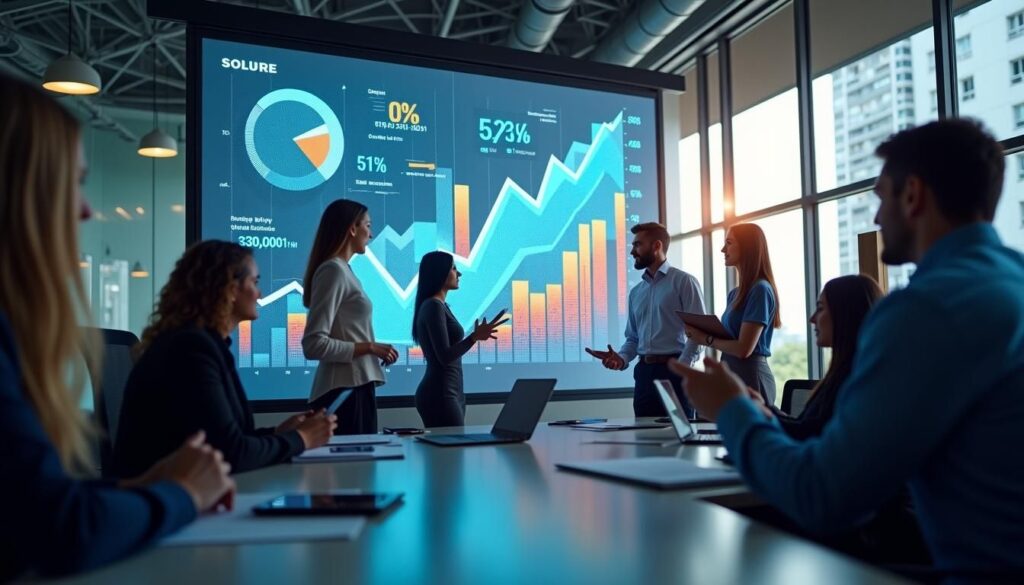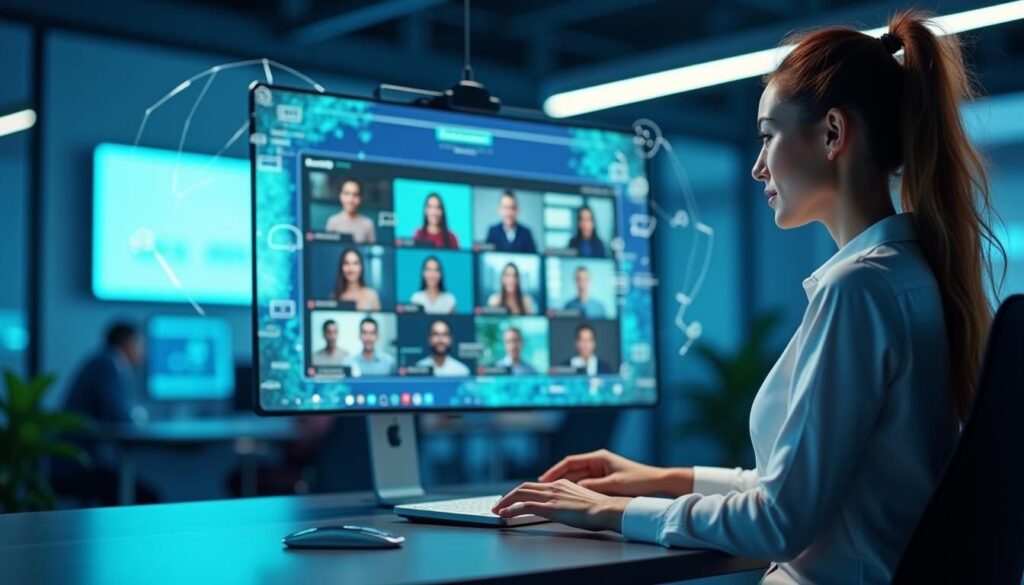Key Takeaways
- Buying groups have ballooned to an average of 10-11 stakeholders, which means SDRs in 2025 aren't just booking meetings, they're orchestrating multi-threaded outreach across whole committees.
- Spray-and-pray outbound is dead; SDRs need tightly defined ICPs, cleaner data, and multi-channel sequences (phone + email + social) that prioritize relevance over raw volume.
- Reps now spend only about 30% of their week actually selling, with 70% lost to non-selling work, so high-performing teams aggressively automate research, data entry, and personalization to free SDRs for live conversations.
- Cold email and cold calling benchmarks are down (27.7% opens, ~5% replies, ~2.3% dial-to-meeting), but teams that combine channels and use deep personalization outperform averages by 2-3x.
- 61% of B2B buyers prefer a rep-free experience and 73% actively avoid irrelevant outreach, so SDRs win by acting as advisors who add context and clarity, not hard-sell interruption machines.
- Outbound SDR teams still drive outsized pipeline: 85% of SDRs are mostly outbound, and outbound deals come in around 50% larger than inbound on average, making SDR excellence a direct growth lever.
- For many B2B orgs, the fastest path to a modern SDR motion in 2025 is a hybrid model: keep strategic leadership in-house and lean on a specialist partner like SalesHive for scalable cold calling, email outreach, and SDR capacity.
Outbound in 2025: noisier buyers, bigger committees, higher expectations
Outbound in 2025 feels harder because it is: buying groups are larger, attention is scarcer, and generic outreach gets filtered out faster than ever. When the average B2B deal involves 10–11 stakeholders, SDRs can’t win by “finding one champion” and hoping the rest works itself out. The modern SDR has to create clarity and momentum across an entire committee, often before anyone is ready to talk.
At the same time, buyers are increasingly self-directed. When 75% prefer to gather product information on their own and 57% report buying a tool without ever meeting a sales rep, the bar for relevance rises on every touch. If our first message doesn’t teach the prospect something useful or help them make sense of a decision, it’s perceived as interruption, not help.
That’s why this role matters more than ever: SDRs are now the front end of revenue, not a calendar-filling function. In our work as a sales development agency, we see the winning teams treating SDRs like revenue owners who influence pipeline quality, not junior admins who “just run sequences.”
Why SDRs still drive growth (even when benchmarks slide)
Response rates are down across channels, and it’s showing up in the averages. Cold email benchmarks in 2025 hover around 27.7% opens and 5.1% replies, which means you don’t earn conversations by volume alone anymore. You earn them by tight targeting, sharp positioning, and a reason to engage right now.
Cold calling has the same reality check. Connect rates commonly land in the 3–10% range, and dial-to-meeting conversion averages about 2.3%, which punishes teams that rely on brute-force activity. The best cold calling services aren’t “more dials”; they’re better lists, stronger openers, cleaner qualification, and disciplined follow-up.
Even with those headwinds, outbound remains a growth lever. About 85% of SDRs work mostly outbound motions, and outbound-sourced opportunities average roughly 50% larger deal sizes than inbound. For leadership, that’s the simplest business case for investing in an outbound sales agency, an SDR agency, or a stronger in-house motion: pipeline created here tends to be materially higher value.
Redefining the SDR: buying-group sherpa, not meeting factory
In 2025, the job isn’t “book a meeting” so much as “orchestrate a buying group.” With 10–11 stakeholders involved on average, a single-threaded thread is fragile: one champion changes roles, and the deal dies. Strong SDR teams map the committee, engage multiple personas, and hand AEs an opportunity that already has internal momentum.
This is also where relevance becomes non-negotiable. Gartner reports 61% of B2B buyers prefer a rep-free experience and 73% actively avoid suppliers that send irrelevant outreach, so “spray-and-pray” doesn’t just underperform—it damages your brand. The new standard is ICP discipline, capped account lists, and personalization that reflects a real point of view about the prospect’s situation.
We recommend measuring SDR impact beyond meetings booked. Activity still matters, but it’s a leading indicator; what counts is pipeline accepted, opportunities influenced, and how many stakeholders are genuinely engaged. When compensation and coaching reflect those downstream outcomes, SDRs naturally self-police low-fit meetings and focus on accounts that can actually convert.
How high-performing teams execute: ICP, multi-channel, and AI co-pilots
The operating system for SDR success in 2025 starts with ICP enforcement. If targeting is loose, SDRs will burn time and reputation chasing accounts that never should have entered the universe. Tighten the criteria, clean the data, and prioritize fewer accounts that warrant thoughtful outreach—especially when buyers are already predisposed to ignore you.
Next is multi-channel execution. Programs that combine calls with email and LinkedIn outreach can lift results by more than 287% compared to single-channel efforts, because each touch supports the others: social warms the call, calls create urgency, email confirms the value. This is why many teams evaluating cold calling companies or a cold email agency end up choosing an integrated b2b sales agency approach instead of siloed vendors.
Finally, pair humans with AI instead of letting AI run wild. Salesforce reports reps spend only about 30% of their week selling, with 70% lost to non-selling work, so automation should remove research, enrichment, and logging—not replace judgment. In practice, AI drafts and suggests angles, and the SDR edits for accuracy, tone, and real relevance so the message doesn’t read like inbox filler.
The best SDRs in 2025 don’t chase meetings; they create consensus inside the account.
Benchmarks that matter: build scorecards around quality and revenue
Benchmarks are helpful when they guide behavior, not when they turn SDRs into activity machines. Email opens around 27.7% and replies near 5.1% are a reminder that deliverability and list quality are strategic, not tactical. If your reply rate is below average, the fix is usually targeting and positioning before it’s “better subject lines.”
Calling metrics should be interpreted the same way. With connect rates often at 3–10% and dial-to-meeting at roughly 2.3%, we want to see consistent call blocks, strong openers, and evidence of learning—not just “more dials.” This is where good coaching and clean lists beat sheer effort, whether you build in-house or outsource sales to a specialized outbound sales agency.
A practical scorecard blends activity, conversion, and pipeline outcomes. The table below is a simple way to align SDRs, AEs, and leadership on what “good” looks like in 2025, especially in pay per appointment lead generation models where quality control is essential.
| Metric type | What to track |
|---|---|
| Activity (leading) | Calls placed, emails sent, LinkedIn touches, accounts worked |
| Conversion (mid) | Email reply rate, connect rate, meeting set rate, meeting held rate |
| Quality (lagging) | Pipeline accepted by AEs, stage progression, opportunities with multiple stakeholders engaged |
| Revenue impact (lagging) | Closed-won influenced, average deal size (outbound vs inbound), win rate by segment |
Common mistakes that quietly kill SDR performance (and how to fix them)
The fastest way to undercut your SDR motion is treating SDRs like junior admins. When calendars fill up with data entry, lead routing, and random ops tasks, your top-of-funnel starves—and it’s especially costly when only 30% of a rep’s week is spent selling. The fix is straightforward: automate enrichment and logging, establish clear ownership boundaries, and protect selling blocks like they’re revenue (because they are).
Another expensive mistake is optimizing for meeting volume over fit and intent. If SDRs are paid to hit “X meetings” regardless of quality, they’ll lower the bar, AEs will reject more handoffs, and trust between teams erodes. Instead, set qualification criteria, give AEs explicit veto power on what counts, and reward pipeline accepted and progressed so everyone is aligned around outcomes.
Finally, one-size-fits-all cadences and “call + email only” execution fall apart in a multi-persona world. Directors, VPs, and technical evaluators respond to different triggers and live in different channels, and ignoring social signals makes your outreach easier to dismiss. Build persona-specific playbooks, add light LinkedIn outreach services into the motion, and create a weekly feedback loop with marketing and RevOps so targeting and messaging stay sharp.
Operational upgrades: specialization, coaching, and the right channel mix
If you want a step-change in results, specialize SDRs by motion, not just territory. Net-new outbound, expansion, event follow-up, and inbound qualification each require different talk tracks and different timing, and specialization builds pattern recognition faster. This is one reason outsourced b2b sales models can work well: a dedicated cold calling team focused on one motion can iterate faster than a generalist seat that’s constantly context-switching.
Coaching is the second lever. Record calls, review a handful weekly, and coach to specific moments: the opener, the first objection, and the close for next step. The same applies to messaging: review real replies and non-replies, then refine the first-touch hypothesis and follow-up structure, because small improvements compound when you’re working hundreds of accounts.
The third lever is turning multi-channel into a repeatable system. When call + email + LinkedIn is coordinated, you get the compounding effect that drives the 287% multi-channel lift—without resorting to spam. This is where an SDR agency or b2b cold calling services partner can add value quickly: not just execution, but proven sequencing, list building services, and the operational rigor to keep quality high.
What to do next: modernize your SDR motion without burning a year
Start by mapping your SDR motion against how buyers actually buy. If 61% prefer a rep-free experience, your outreach should feel like guidance, not pressure: share context, point to a decision risk, and offer a short, specific next step. If buying groups average 10–11 stakeholders, build multi-threading into the plan from day one, not after the first meeting.
Then audit time and remove friction. With 70% of the week lost to non-selling work, freeing even 10–20% more selling time can move the needle immediately. That might mean better tooling, stricter meeting hygiene, or sales outsourcing for research, list building, or even full outreach execution through an outsourced sales team.
Finally, choose the operating model that fits your stage. Many teams land on a hybrid: strategy, ICP, and messaging ownership in-house, with execution scaled through an outbound sales agency or cold calling agency that can ramp quickly. If you’re evaluating sales agencies, prioritize proof of multi-channel capability, transparent reporting, and a clear plan to protect brand trust while still generating qualified pipeline.
Sources
- Martal (summarizing 6sense research on buying groups)
- Gartner Newsroom (Sales Survey, rep-free preference and irrelevant outreach avoidance)
- Salesforce State of Sales (6th Edition)
- Salesso (Cold email statistics 2025)
- Salesso (Cold calling statistics 2025, including multi-channel lift)
- Salesso (Outbound SDR statistics 2025)
- HubSpot (B2B buyer stats)
📊 Key Statistics
Expert Insights
Redefine the SDR as a Buying-Group Sherpa, Not a Meeting Factory
Stop measuring SDR success only by raw meeting counts. In 2025, the job is to identify and engage an entire buying group of 8-12 stakeholders, build internal consensus, and hand AEs a multi-threaded opportunity. Track number of engaged stakeholders and opportunities influenced, not just calendars filled.
Trade Volume for Relevance and ICP Discipline
With buyers dodging irrelevant outreach, your SDRs will do more damage than good if targeting is loose. Tighten your ICP, cut junk accounts, and cap contacts per account so reps can personalize properly. A smaller, sharper universe where SDRs do real research will beat a bloated, burn-the-list motion every time.
Pair Humans with AI Instead of Letting AI Run Wild
AI can handle data enrichment, drafting first-pass emails, and suggesting call talk tracks, but humans should always own messaging judgment and final edits. Treat AI as an SDR co-pilot: it proposes, the human disposes. This keeps your outreach fast and scalable without sounding like every other bot in the inbox.
Measure Pipeline Quality, Not Just Activity Metrics
Dials, emails, and meetings booked still matter, but they're leading indicators. Tie SDR compensation and recognition to pipeline accepted by AEs, opportunity progression, and closed-won revenue. When SDRs are rewarded for quality, they'll self-police bad meetings and spend their energy on the right accounts.
Specialize SDRs by Motion, Not Just by Territory
In many B2B orgs, it's more effective to split SDRs by motion (e.g., net-new outbound vs. expansion/upsell vs. event follow-up) than by geography alone. Each motion has different talk tracks, triggers, and KPIs, and specialization lets SDRs develop the pattern recognition to perform at a much higher level.
Common Mistakes to Avoid
Treating SDRs as junior admins instead of revenue-owning sellers
When SDRs are buried in data entry, lead routing, and random ops projects, they can't spend enough time in conversations, and your top-of-funnel starves.
Instead: Automate everything you can (enrichment, routing, logging) and protect SDR calendars for live selling time. Make it explicit that their job is to generate qualified pipeline, not be the catch-all for busywork.
Optimizing purely for meeting volume over fit and intent
If SDRs are pushed to hit 'X meetings per month' at all costs, they'll lower the bar and book junk, which frustrates AEs and erodes trust in the SDR function.
Instead: Set clear qualification criteria, give AEs veto power on what counts, and add downstream metrics like opportunity conversion and win rate to SDR scorecards so they're incented to protect quality.
Running one-size-fits-all cadences across every segment
Directors, VPs, and technical evaluators care about different problems and hang out in different channels, so generic sequences land as noise and fuel buyers' rep-free preferences.
Instead: Design persona- and segment-specific playbooks with tailored messaging, channel mix, and social proof. Train SDRs to adjust cadences on the fly based on signals instead of mindlessly following a default sequence.
Ignoring social and community channels in favor of just phone and email
Your buyers are comparing notes in Slack communities, LinkedIn groups, and industry forums. If SDRs only call and email, they miss where trust is actually built.
Instead: Enable SDRs to participate professionally on LinkedIn, comment on prospect posts, and reference community conversations. Add light social touches into cadences to warm up calls and emails.
Keeping SDRs siloed from marketing and RevOps
When SDRs don't feed real-world insights back to campaign builders and data owners, messaging gets stale and targeting drifts off-ICP, tanking performance.
Instead: Create a tight feedback loop: weekly SDR–marketing standups, shared dashboards, and a simple channel where reps submit field intel and objections that can immediately influence campaigns and content.
Action Items
Map your current SDR motion against the 2025 buyer journey
Document how prospects actually buy (channels, stakeholders, key moments) and compare that to where your SDRs spend time. Close gaps by shifting effort into earlier education, more stakeholders, and the channels buyers actually prefer.
Redesign SDR KPIs to balance volume, quality, and revenue impact
Keep activity metrics, but add pipeline accepted, multi-threaded opportunities, and closed-won attribution. Review these in every 1:1 so reps internalize that thoughtful targeting and qualification are non-negotiable.
Implement multi-channel cadences with explicit personalization rules
Build standard sequences that combine phone, email, and LinkedIn, and define minimum personalization standards (e.g., custom opener + problem hypothesis for every first touch) so reps know what 'good' looks like.
Free up at least 20% more SDR selling time with automation or outsourcing
Audit SDR calendars and workflows, then offload research, list building, and basic outreach either to tools or a partner like SalesHive so in-house reps can focus on high-impact conversations and strategic accounts.
Stand up a simple SDR–AE operating rhythm
Define SLA-style expectations for handoffs, pre-call research, and post-meeting feedback. Run a weekly SDR–AE deal review to align on targets, refine qualification criteria, and tune messaging together.
Enable SDRs with modern call and email coaching
Record calls, track email performance, and run short weekly call-review and copy-review sessions. Focus coaching on real interactions rather than generic theory so SDRs improve where it actually moves the needle.
Partner with SalesHive
SalesHive can own the full SDR function or flex around your in-house team. Need pure cold calling? Their US-based reps (and optional Philippines-based teams for cost-efficient scale) handle dialing, objection handling, and appointment setting while your AEs focus on closing. Want email to work again? SalesHive’s eMod AI personalization engine scans public data to generate one-to-one email openers and messaging, lifting reply and meeting rates without turning your outreach into obvious AI spam. Add in expert list building, month-to-month contracts, and risk-free onboarding, and you’ve got a way to modernize your SDR motion fast-without locking yourself into long, expensive experiments.
❓ Frequently Asked Questions
What exactly should SDRs be responsible for in 2025?
In 2025, SDRs should own the front end of revenue: defining and prioritizing target accounts, multi-threading into buying groups, running outbound sequences across phone, email, and social, and qualifying interest into sales-ready opportunities. They're not just appointment setters. They're responsible for generating high-quality pipeline that aligns with your ICP and revenue goals, and for feeding market intel back to marketing and product.
How has the SDR role changed compared to a few years ago?
The big shift is from linear, single-threaded outreach to orchestrating complex, buyer-led journeys. Buying groups have grown to 10-11 stakeholders on average, and most buyers now prefer to research independently, often purchasing without ever talking to sales. SDRs today must personalize deeply, work multiple stakeholders per account, and act as helpful guides rather than pushy gatekeepers. They also increasingly work side by side with AI tools that handle research and drafting so they can focus on judgment and conversations.
What are realistic SDR performance benchmarks in 2025?
Benchmarks vary by ACV and market, but a typical outbound SDR might make 40-60 calls and send 40-100 emails per day, generating 3-6 quality conversations. Cold email reply rates average around 3-5%, and cold call dial-to-meeting rates hover near 2-3%. Top teams that invest in list quality, multi-channel sequences, and coaching often double these numbers, especially on reply and meeting rates.
Where does AI fit into SDR work without making outreach robotic?
AI is best used as a force multiplier, not a replacement. It can research accounts, summarize buyer content, suggest hooks, and draft first-pass emails or call openers. SDRs then edit for tone, relevance, and accuracy. Teams that let AI send generic mass emails see their response rates crater; teams that use AI to do the heavy lifting and then humanize the final message see higher-quality engagement and preserve brand trust.
Should we keep SDRs in-house or outsource to an agency?
It depends on your stage and priorities. Early-stage or lean teams often move faster by outsourcing to a specialist that already has the tech stack, processes, and SDR talent in place. More mature orgs may keep strategic or enterprise SDRs in-house and use an agency for incremental capacity, new verticals, or specific motions like cold calling. Hybrid models are common: you own strategy and ICP, a partner executes day-to-day outreach and appointment setting.
How many SDRs do we need relative to AEs?
There's no universal magic ratio, but many B2B teams land between 1:1 and 1:3 SDRs per AE depending on deal size and reliance on outbound. If your AEs are doing a lot of their own prospecting or pipeline is consistently light, you likely need more SDR capacity. Rather than obsess over headcount ratios, start from your revenue target, win rates, and average deal size, then work backwards to how much qualified pipeline SDRs must generate and what each SDR can realistically produce.
What skills should we prioritize when hiring SDRs in 2025?
Look for curiosity, writing skills, resilience, and coachability over prior industry knowledge. Modern SDRs need to research accounts, write clear and concise emails, handle rejection, and adapt their approach based on feedback and data. Experience with tools is nice, but the ability to think like a problem-solver and communicate like a human is what separates top performers from box-checkers.
How do we keep SDRs engaged and reduce burnout?
Outbound is hard work in any year, and 2025 is no exception. Give SDRs clear development paths (into senior SDR, AE, or RevOps), celebrate the right wins (quality pipeline, not just raw meetings), and provide constant coaching instead of just dashboards. Rotate them onto strategic projects like messaging tests or vertical playbooks, and remove as much busywork as possible so they feel like sellers, not data-entry clerks.






